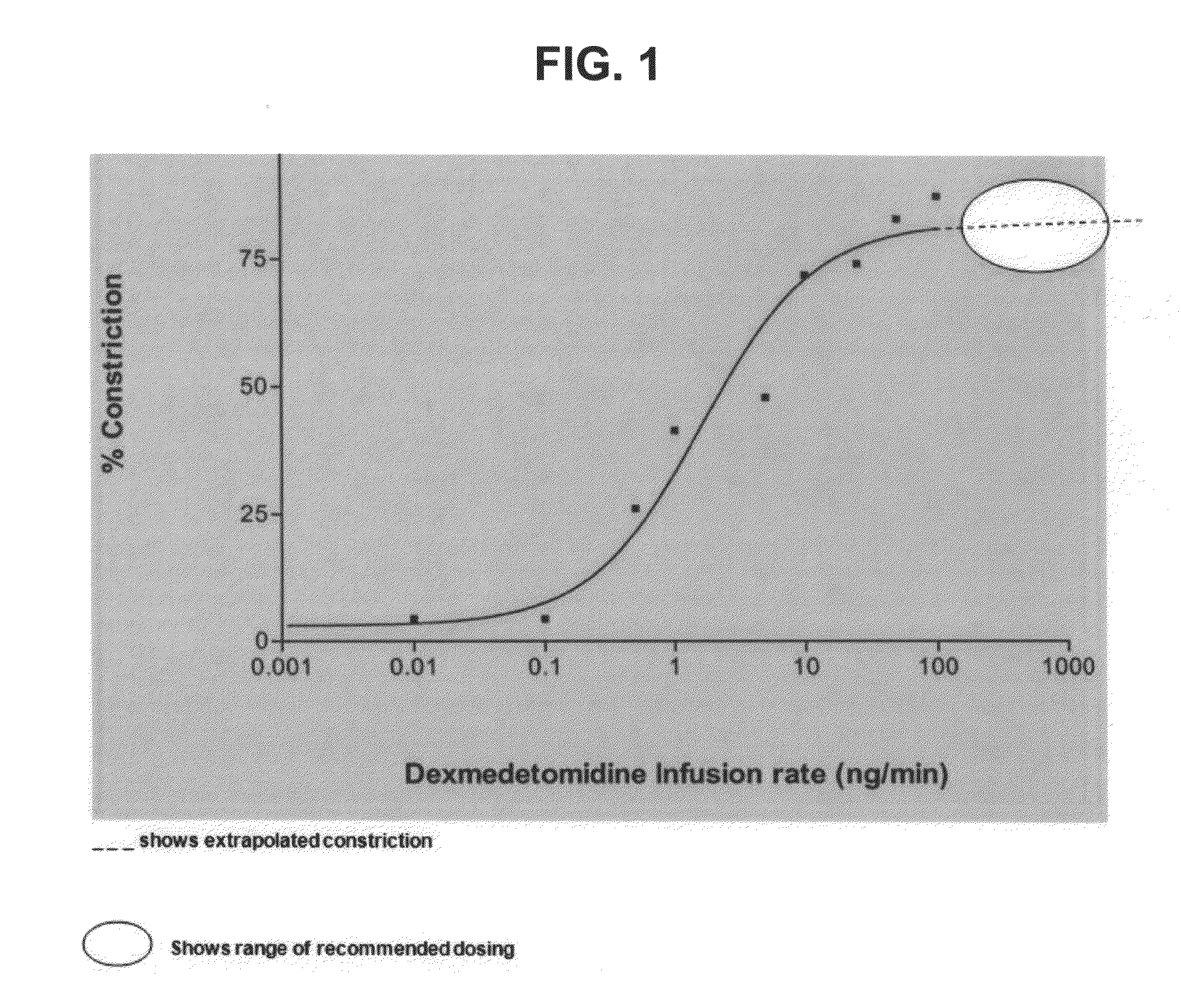Compositions and methods for treatment of diseases and conditions associated with vasodilation and/or vascular leakage
a technology of vasodilation and leakage, applied in the direction of drug compositions, inorganic non-active ingredients, dispersed delivery, etc., can solve the problems of loss of intravascular volume into interstitial space, ischemia and additional inflammation, and possible rebound vasodilation and hyperemia, so as to reduce the large vegf-induced postcapillary venular gap, reduce the vascular permeability, and reduce the effect of larg
- Summary
- Abstract
- Description
- Claims
- Application Information
AI Technical Summary
Benefits of technology
Problems solved by technology
Method used
Image
Examples
example 1
Reversing Alpha-1 Agonist Induced Ischemia and Rebound Hyperemia
[0142]This experiment demonstrates that the compositions and methods of the present invention are able to reverse α-1 agonist induced ischemia and rebound hyperemia. The Example is best illustrated through FIGS. 4A-4C.
[0143]FIG. 3A is a baseline visual appearance of two eyes of a patient with an ocular condition.
[0144]FIG. 3B depicts a visual appearance of the right eye of the patient after being treated with a prior art composition comprising VISINE Original® (Johnson & Johnson's registered trademark; active ingredient: tetrahydrozoline HCL 0.05%). The treatment induced rebound hyperemia in the right eye. The left eye of the patient after being treated simultaneously with a composition of the present invention comprising brimonidine at 0.015% is free of hyperemia.
[0145]FIG. 3C depicts a visual appearance of the right eye of the patient after then being treated with the composition of the present invention comprising br...
example 2
Prophetic
Effect of Brimonidine and Dexmedetomidine on Inhibition of VEGF Inflammatory Cascade
[0147]The purpose of this experiment is to test the effect of administering aerosolized brimonidine and dexmedetomidine on pulmonary function and vascular leakage via lung weight measurement in acute respiratory viral infection.
[0148]Study Design
[0149]A parallel group design of five groups of eight rats each: virus / saline, virus / brimonidine, virus / dexmedetomidine, sham / saline, sham / brimonidine. Treatments are twice daily, beginning one day post inoculation, and ending the morning of terminal studies on day 4, 5 or 6 post inoculation.
[0150]Treatments[0151]1) Brimonidine tartrate 0.05% aerosol, generated with ultrasonic nebulizer (12 ml solution loaded into nebulizer for each treatment), delivered into a holding chamber, and breathed spontaneously by awake rats for 5 minutes twice daily (0800 and 1800 hrs), beginning eight hours after viral inoculation.[0152]2) Dexmedetomidine HCl 0.05% aeroso...
PUM
| Property | Measurement | Unit |
|---|---|---|
| weight | aaaaa | aaaaa |
| size | aaaaa | aaaaa |
| size | aaaaa | aaaaa |
Abstract
Description
Claims
Application Information
 Login to View More
Login to View More - R&D
- Intellectual Property
- Life Sciences
- Materials
- Tech Scout
- Unparalleled Data Quality
- Higher Quality Content
- 60% Fewer Hallucinations
Browse by: Latest US Patents, China's latest patents, Technical Efficacy Thesaurus, Application Domain, Technology Topic, Popular Technical Reports.
© 2025 PatSnap. All rights reserved.Legal|Privacy policy|Modern Slavery Act Transparency Statement|Sitemap|About US| Contact US: help@patsnap.com



